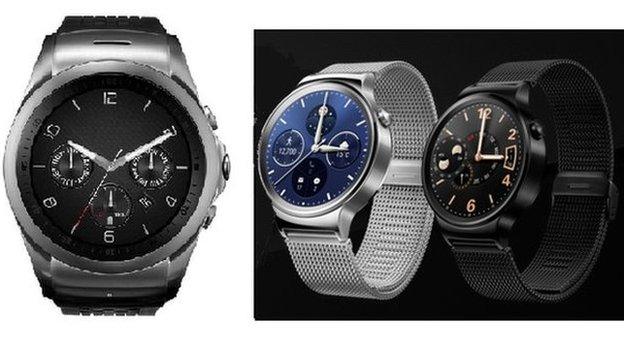Huawei says P8 phones have 'professional' camera features
- Published
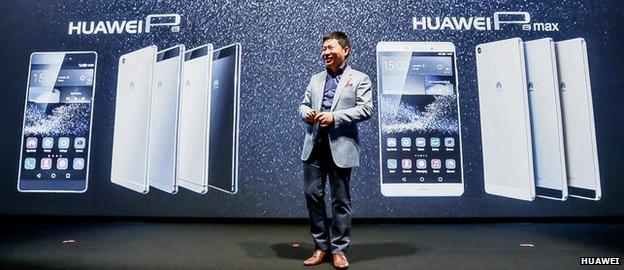
Huawei announced its new smartphones in London, far from its Shenzhen-based headquarters
Huawei has unveiled its latest flagship phones with cameras that it says are capable of creating "professional" looking photos and videos.
The firm said a mix of an advanced sensor and optical image stabilisation tech offered superior night photos and the ability to create "light painting" effects with real-time previews.
The Chinese company is pitching its P8 handsets as "premium" options.
But one analyst said the firm still had a "mountain to climb".
The Shenzhen-headquartered company impressed many reviewers with the design of a smartwatch unveiled at Barcelona's Mobile World Congress in February, which one tech blog described as, external "the surprise hit" of the trade fair.
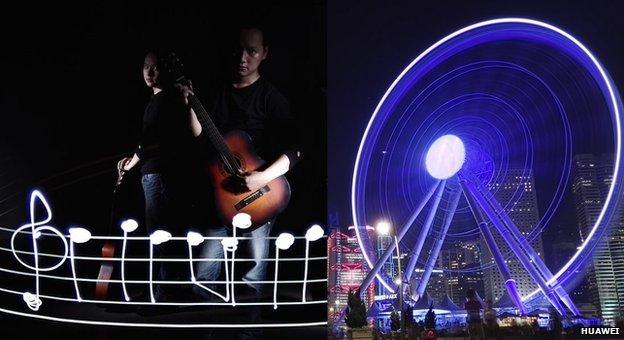
The phone is capable of photo effects including light paintings and long low-light exposures
However, Ben Wood, from the tech consultancy CCS Insight, said Western consumers still perceived it as being a "value-for-money brand".
"Huawei's challenge is how to differentiate a great-looking device from the sea of similar smartphones," he added.
"Apple's vice-like grip on the high-end smartphone market has effectively locked out all rivals, with the possible exception of Samsung, which is having to make an eye-watering marketing investment to attract consumers to its new products."
White-colour pixels
The new Android-powered phones, which were unveiled in London, come in two sizes - the basic P8 with a 5.2in screen (13.2cm) and the P8max with a larger than normal 6.8in (17.3cm) display.
Both feature a 13 megapixel rear camera whose image sensor includes pixels dedicated to measuring white light as well as the more common red, green and blue colour pixels.
The firm says this delivers improved images in high contrast and low light situations.
In addition, the handset features what the firms claims to be a "best-in-class" stabilisation component that minimises camera shake.
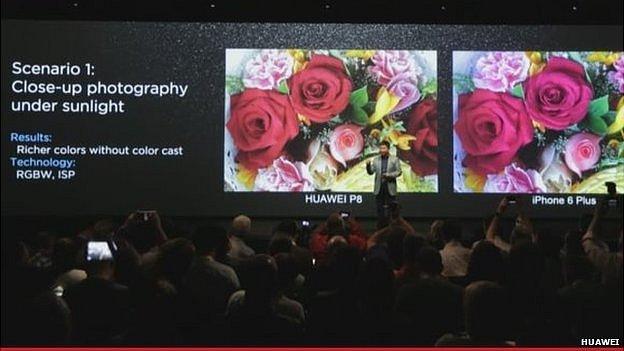
Huawei suggests that its phones take richer-coloured photos than Apple's iPhone 6
This allows its shutter to be kept open for longer, helping capture sharp images in dim light.
It also permits the device to be put into light-painting mode while operated freehand, letting users draw inside a photo as it's taken by quickly shining light from a small torch across their view.
Although this function is available to other smartphones, Huawei says it is unusual in being able to provide a live preview of what the shot look likes, making it easier to achieve the light-based doodles.
In addition, four P8 phone can be linked together to provide a multi-cam filming system, allowing users to record video footage containing changes in view.
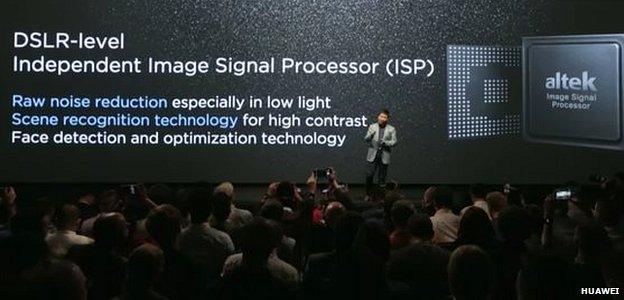
Huawei was keen for its phones to viewed as viable alternatives to much more bulky and expensive cameras, at least in some situations
Sony pioneered a similar built-in option in its Xperia handsets last year.
Knuckle sensors
Although another Chinese handset-maker - Xiaomi - has captured many headlines of late, Huawei ended last year with a bigger market share.
It accounted for 6% of global smartphone shipments at the close of 2014, according to CCS Insight.
That put it in fourth position behind Lenovo, another Chinese manufacturer, whose figures have been boosted by its recent takeover of Motorola.
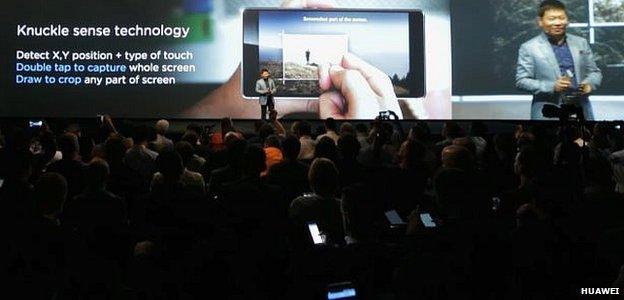
Huawei boasted of its handset being able to distinguish knuckle taps from finger controls
"Huawei's new camera technology is impressive and it's invested a lot in the associated software to make it quick, but my concern is that for most consumers the cameras on their smartphones are already good enough," said Mr Wood.
"But there is another feature that's interesting: the knuckle sense technology that you to double-tap the screen with your knuckle to take a screenshot - that's going to appeal to the Snapchat generation wanting to capture pictures before they disappear."
Hitler apology
Huawei's smartphone launch coincided with that of a lesser-known Chinese manufacturer LeTV.
Its new device, Le Max, is the first handset to feature a USB-C port.
The facility allows the device to be connected and charged with a reversible cable - similar to Apple's Lightning connector.

LeTV apologised after an advert for its new phone linked Hitler and Apple's brands
The announcement has been overshadowed by the fact the firm's chief executive recently apologised after commissioning an advertising campaign featuring a cartoon of Hitler with Apple's logo in the place of a swastika on his armband.
Jia Yueting acknowledged that the image was "insensitive and wrong" after posting a still on Weibo, a Chinese Twitter-like service.
The ad now features a cartoon king instead. Apple has not commented on the affair.
- Published31 March 2015
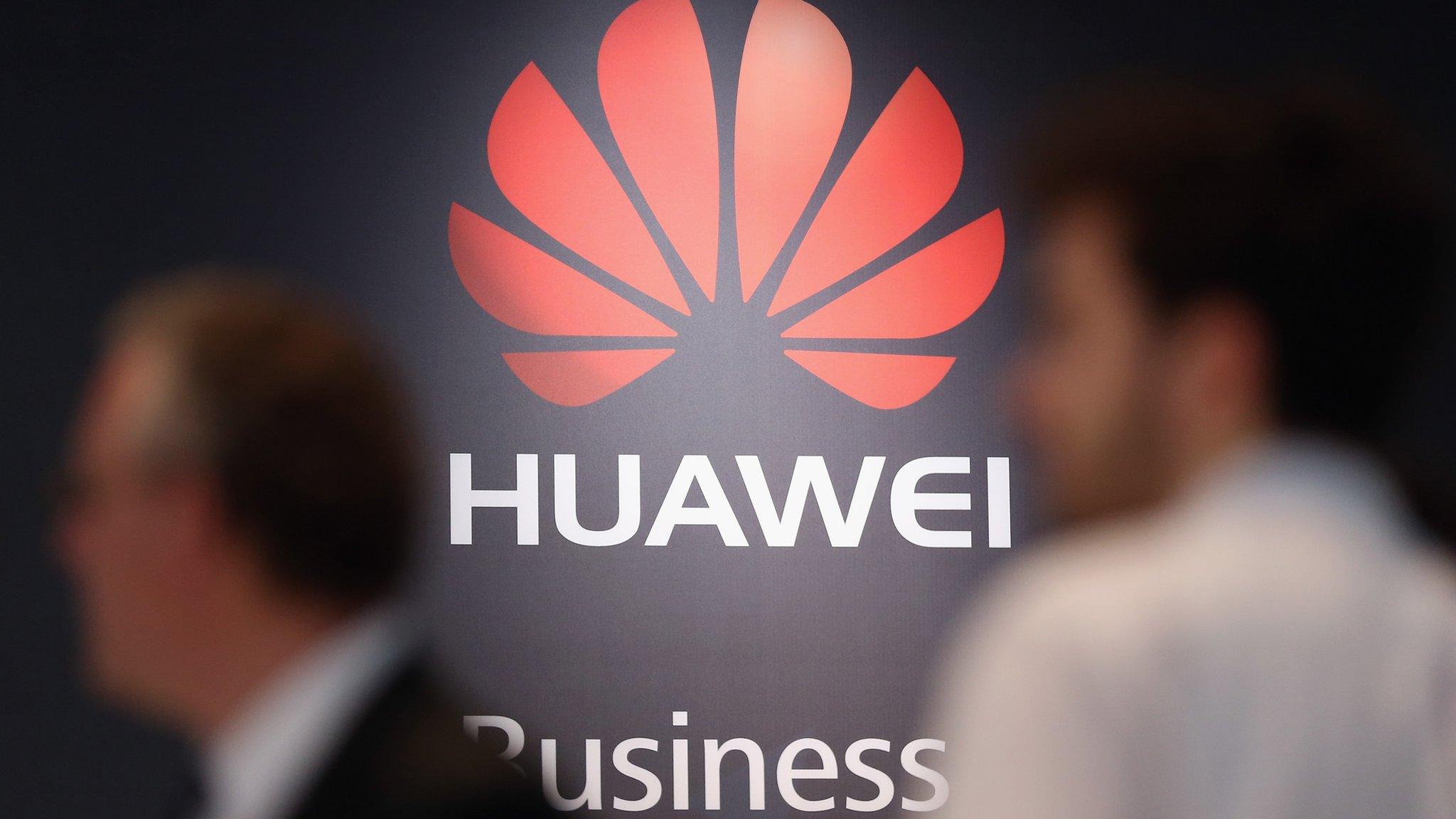
- Published13 March 2015
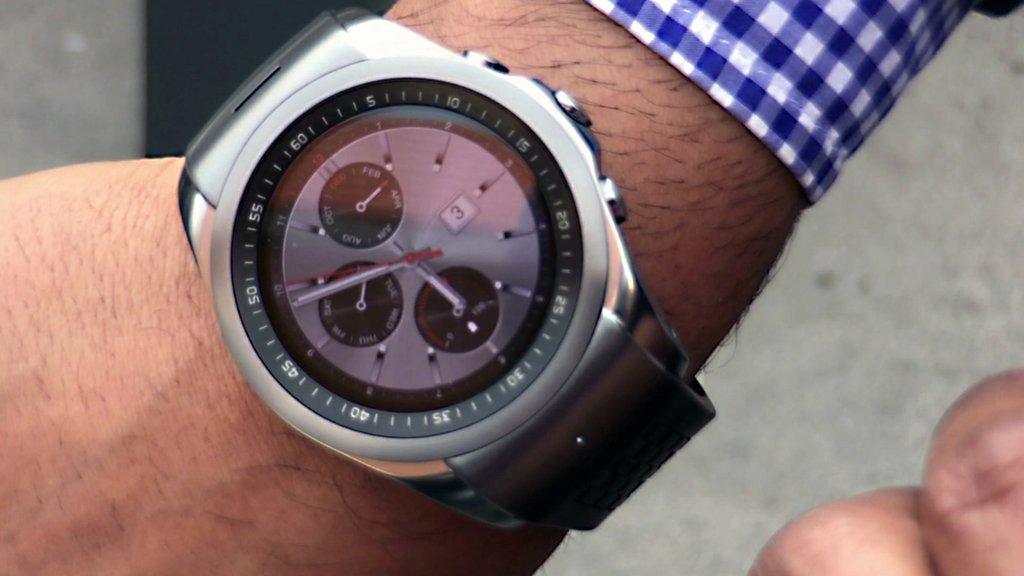
- Published1 March 2015
